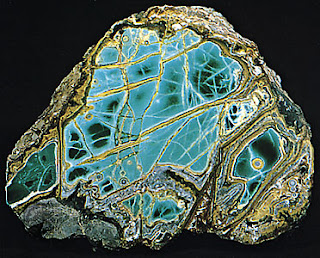
Founded in 2011, The International Sphaeralogical Society was created to celebrate the history and dynamism of the Super Ball®. Invented by chemist Norman Stingley in 1965 and sold by the Wham-O Manufacturing Co., the iconic toy has been the subject of fascination and play for almost half a century. The I.S.S. is dedicated to exploring and promoting the allure of this bounciest of balls.
Thursday, October 22, 2020
Hypersphaera lopshireum
Hypersphaerae vandoesburg
Colored Diamond Pattern Superball
This style of ball is named after the Dutch artist Theo van Doesburg who was, along with Piet Mondrian, one of the founders of the De Stijl movement that was concerned with abstraction, simplicity and a new kind of applied art.
(Source: https://www.artsalonholland.nl/grote-meesters-kunstgeschiedenis/theo-van-doesburg.)
H vandoesburg display geometric and rectilinear "blocks" of rpimary and secondary colors in a solid color field—the base color varying from the blocks but represented as such in alternate samples; I.e, with a green base field, the green block would not appear. The design is made within a sheet of rubber and then molded around a core in the construction process. The surface is most often matte and textured but can be found with smooth, shiny skins as well. The balls are dense and less dynamic than typical styles and can oxidize and dry out with age. (Photo courtesy of Headwater Media.)
Theo van Doesburg, Composition VIII (the cow),
ca.1918, oil on canvas, 38 x 64 cm,
Museum of Modern Art, New York, USA
Wednesday, October 21, 2020
Hypersphaerae hokusai
Hypersphaerae cramiconcrispo
Tuesday, October 20, 2020
Hypersphaerae anuli
Hypersphaerae variscia
Hypersphaera pele
Monday, October 19, 2020
Hypersphaerae monomarmoreus
Hypersphaerae monomarmoreus
2013
A hand-crafted specimen box by Henry J. Simonds, created for the exhibition, Super•Ball, held at The Mine Factory in Pittsburgh, Pa, in December 2013.
Materials: Salvaged Booker's® bourbon collector's box, contemporary balls, hardware, plexiglass, paint, synthetic fill, and printed label.
Photo: ©2013 Henry J. Simonds/Headwater Media
Hypersphaerae iridis
Bornite Superball
Bornite, also known as "peacock ore," is a copper iron sulfide mineral ore found in "mafic igneous rocks, in contact metamorphic skarn deposits, in pegmatites, in medium- to high-temperature hydrothermal deposits, and in sedimentary cupriferous shales." Its natural color is red, brown, or bronze, which quickly tarnishes to metallic, iridescent purple and blue with oxidization.
(Source: https://geologyscience.com/minerals/bornite/.)
H iridis mimics the range of colors of bornite in both its natural and oxidized states and the texture of the ore's variegated surface. The balls are opaque but show a luminescence due to the "metallic" core and the smooth, outer skin. The balls derive their color from pigmenting within the interface of the outer skin and the core surface coating. They are heavier and more dense than other sphaerae due to the nature of the core material but are prone to cracking of the outer layer and tend to dry out with time due to exposure. (Photo Courtesy of Lenore M. Edman. www.evilmadscientist.com) (Below: 2 bornite mineral samples.)
Hypersphaerae iridis
2013
A hand-crafted specimen box by Henry J. Simonds, created for the exhibition, Super•Ball, held at The Mine Factory in Pittsburgh, Pa, in December 2013.
Materials: contemporary balls, hardware, found frame, plexiglass, paint, salvaged wood, and engraved plate.
Photo: ©2013 Henry J. Simonds/Headwater Media
Sunday, October 18, 2020
Hypersphaera taeniae
Hypersphaerae janus
Half-Moon Superball
2013
Specimen box created by Henry J. Simonds for the exhibition, Super•Ball, shown at The Mine Factory in Pittsburgh, Pa, December 2013.
Constructed of salvaged wood, paint, and plexiglass with a contemporary ball.
Photo Credit: ©2013 Henry J. Simonds/Headwater Media.
Thursday, October 15, 2020
Hypersphaerae jesteri
This multi-colored ball features a random pattern of primary and secondary colored diamond and rhomboid shaped blocks intermixed with blocks of white. No two adjacent blocks are of the same color. The pattern is reminiscent of the designs featured on the outfits of jesters throughout history and the Harlequin character from commedia del' arte. The surface design appears to be a "skin" or separate layer, mounted onto the ball's core. H jesteri can be found with both a textured, matte surface or a shiny, smooth one.
Photo Courtesy of Lenore M. Edman, www.evilmadscientist.com

A photograph of a HYPERSPHAERA JESTERI (Harlequin Superball), SC-F6, is featured on one of the Official I.S.S. T-Shirts available on the Sphaeralogical Society's Etsy on-line shop: ***click here***
































